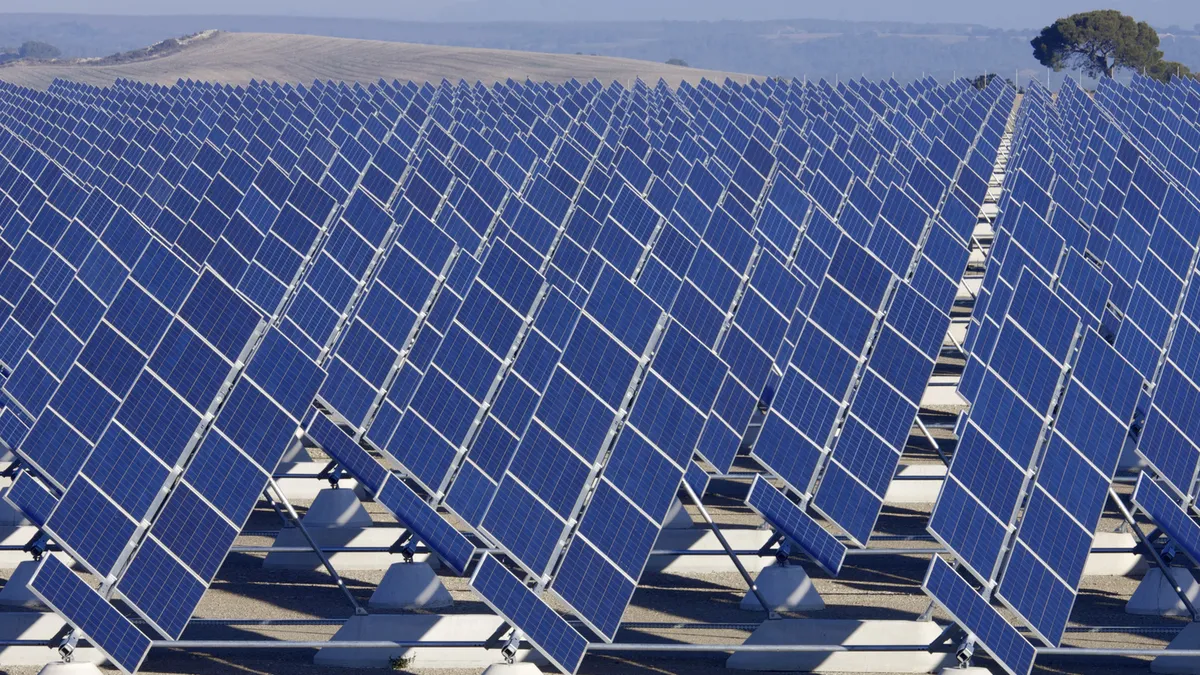Dive Brief:
- A "significant chunk" of future renewable energy in the PJM Interconnection will come from corporate power purchase agreements (PPAs) and direct merchant generation, said Andrew Levitt, PJM senior market strategist.
- "I would say corporate procurement through PPA of solar is like a great point of pride of ours," Levitt told Utility Dive on Wednesday at Energy Storage International / Solar Power International.
- The Federal Energy Regulatory Commission (FERC) is taking stakeholder comments until Tuesday on PJM's proposed fixes to their capacity market rules. Speaking separately on a panel, Levitt said PJM is not trying to affect solar but the resource's subsidies themselves through its minimum offer price rule (MOPR) proposal.
Dive Insight:
Levitt's comments come as the RTO is considering price reforms that could affect the ability of solar and other renewables to compete. Fossil fuel generators have complained for years that subsidized renewables and nuclear power plants depress capacity market prices, allowing them to offer cheaper electricity than coal and gas generators could afford.
Regarding the FERC comment period, Levitt issued a request for feedback that would be most helpful to PJM from solar developers, such as their definition of a subsidy. While PJM has lumped in renewable energy subsidies with nuclear energy subsidies, comments on specific types of subsidies could address the different impact of state or federal energy policies.
He also asked for feedback on how a developer calculates the price floor of solar.
"You know, help us understand what that pro forma cash flow looks like so we take the correct discount rate and give the correct capital cost," Levitt told a panel at the conference.
Discussing PJM's MOPR, Levitt described the concept of asking power providers who can offer lower prices due to subsidies to sell electricity at a higher price as "a counterintuitive thing to do."
"Nonetheless, that's what we're doing," Levitt said. "And the idea here again is that if you have quite an impactful quantity of subsidized resources coming in," the low price offered by subsidized generators like nuclear plants or renewable energy, is more critical than a short-term commodity price.
"This is the price that's actually meant to incentivize investment decisions three years from now, retirement decisions three years from now," Levitt said.
However, the advent of renewable energy credits (RECs) helped drive merchant generation investment, Levitt said in a brief interview after the panel. Generators could pencil out solar without PPAs, "just running off of RECs and wholesale revenues," he said. Meanwhile, he pointed to deregulation as a key factor in allowing more corporations to use PPAs to buy renewable energy, referencing Microsoft and Amazon's purchases of hundreds of megawatts of solar and wind.
"So that's fantastic and I think that is a significant chunk of the future of renewables in PJM, as I look into my crystal ball," he said.
Other sources of renewables purchases on the horizon in PJM are utility PPAs that include deals for solar or wind energy, "coming in either through integrated resources plans in our vertically integrated states," or through programs such as the electric security plan in Ohio, Levitt told Utility Dive.















